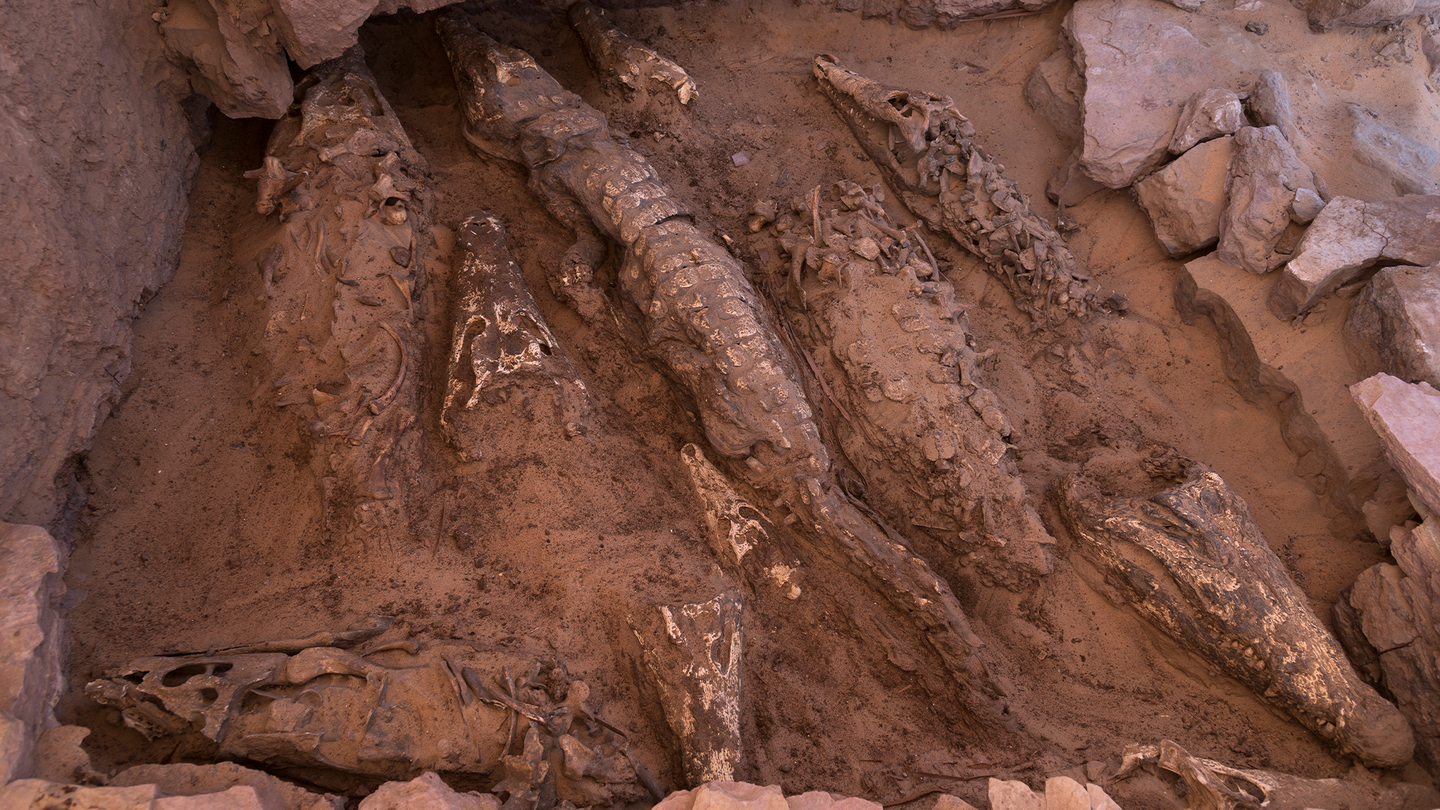Nothing says ‘royal’ quite like being buried with a 16,500 pound reptile.

Mummification isn’t just for human bodies. Scientists have uncovered everything from cats to hawks to cobras mummified in tombs across Egypt. Some big and fearsome predators were also mummified, including some crocodiles species that can weigh up to 16,500 pounds and are found in the Nile River were also mummified. A new study published on January 18 in the open-access journal PLOS ONE is taking a closer look at these preserved reptiles.
The team of researchers from institutions in Belgium and Spain finds that crocodiles were mummified in a unique way at the burial site of Qubbat al-Hawā in Aswan, Egypt during the 5th Century BCE. While there are several hundred mummified crocodiles available in museum collections around the world, they are not often examined thoroughly. The team looked at both the formation (morphology) and preservation of 10 crocodile mummies ranging from about five to 11 feet long. The specimens were found during excavations in 2018 in rock tombs at Qubbat al-Hawā, along the western bank of the Nile River.

The mummies included five partial skeletons and isolated skulls.
“The crocodiles are an extraordinary find,” study co-author Bea De Cupere from the Royal Belgian Institute of Natural Sciences, tells PopSci. “Although I am an archeozoologist and used to work with animal bones, the crocodile skulls were very impressive, and I am very happy to have got the opportunity to study these crocodile remains.”

The team believes that the mummies come from two crocodile species, West African and Nile crocodiles, based on their morphology. They also found that the preservation style was different than the ones used on mummies found at other sites. There was no evidence that resin was used to plug up holes in the bodies or that carcass evisceration (the removal of the internal organs) was part of the mummification process.
“It is assumed that the animals were first, elsewhere, laid on the surface or buried in a sandy environment that allowed the bodies to dry out naturally. Most likely the intestines were thus not removed,” De Cupere says.

This preservation style suggests it occurred during the pre-Ptolemaic age, or before the reign of Egypt’s Ptolemy Dynasty, the dynasty that included Cleopatra VII. This style is consistent with the final phase of funeral practices used during the 5th Century BCE, according to the team.
Comparing mummies and the mummification techniques behind them is helpful when studying patterns and practices in both animal use and corpse preservation over time.
Some of the limitations of this particular study included a lack of available ancient DNA from the crocodiles and radiocarbon dating.
“The presence of two species of crocodiles (the Nile crocodile and the West-African crocodile) in the tomb has been hypothesized. It would be ideal to test the species identification with DNA-analysis,” says De Cupere. “Based on the archaeological context and the lack of evidence of resin or bitumen use, the crocodile deposit is assumed to be pre-Ptolemaic. Radiocarbon dating of the animals would be worthwhile”
Additional studies incorporating both DNA analysis and radiocarbon dating will help present day scientists better understand ancient Egyptian cultural practices.